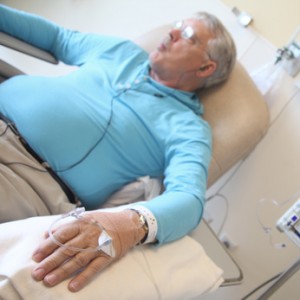A single program can cut the number of abused or neglected children in America in half; reduce the number of babies or toddlers hospitalized for accidents or poisonings by more than half; and provide a 5 to 7 point I.Q. boost to children born to the most vulnerable mothers.
This program is the Nurse-Family Partnership program or NFP, founded by David Olds in the early 1970’s. It has been studied carefully and has shown “sizable, sustained effects on important life outcomes which were replicated across different populations,” according to this article by David Bornstein in the New York Times’ Opinionator.
The program arranges for registered nurses to make regular home visits to first-time mothers who are low-income or otherwise vulnerable, starting early in their pregnancies and continuing until the child is two years old. The program has assisted 151,000 families to date and has the potential for even larger impact, due to the Affordable Care Act’s Maternal, Infact, and Early Childhood Home Visiting Program. This provides $1.5 billion for states to expand programs like the NFP.
Bornstein says, “Done well, it could be among the best money the government spends.” The problem is that not all such programs are done well. He encourages policy makers and proponents of home visiting to pay attention to the specific elements of the NFP model that account for its success.
One of the most important elements proved to be nurses. When it came to improving children’s health and development, maternal health, and mothers’ life success, registered nurses got results that were much better than when other, similar programs used paraprofessionals instead.
What’s special about nurses? For one thing, trust. In public opinion polls, nurses are consistently rated as the most honest and ethical professionals by a large margin. But there were other reasons nurses were effective. Pregnant women are concerned about their bodies and their babies. Is the baby developing well? What can I do for my back pain? What should I be eating? What birthing options are available? Those are questions mothers wanted to ask nurses, which was why they were motivated to keep up the visits, especially mothers who were pregnant for the first time.
Nurses had more influence encouraging mothers to delay subsequent pregnancies, Olds explained. They could identify emerging complications more promptly, and they were more successful at getting mothers to stop or reduce smoking, drug or alcohol use. This is vital. Prenatal exposure to neurotoxicants is associated with intellectual and emotional deficits. It can also make babies more irritable, which increases risks of abuse. (A mother who was abused herself is more likely to misinterpret an inconsolable baby’s crying as “bad behavior.”)
“A lot of the young mothers have had some pretty terrible early life experiences,” says Olds. “It’s not uncommon for them to have been abused by partners or never have had support and care from a mother. Their lives haven’t been filled with much success and hope. If you ask them what they want for themselves, it’s not uncommon for them to say, ‘What do you mean?’”
A big part of NFP’s work is helping them answer this question.
Consider the relationship between Rita Erickson and Valerie Carberry. Rita had had a methadone addiction for 12 years and was living from place to place in Lakewood, Colo. She found out she was pregnant; a parole officer told her about NFP. “I’d burned bridges with my family,” Rita told me. “I was running around with the wrong people. I didn’t have anyone I could ask about being pregnant.” In the early months, Valerie had to chase her around town, Rita recalled. “I was worried she might say, ‘This is too much hassle. Come back when you have your act together.’ But she stuck with me.”
Over the next two years, they embarked on a journey together. “I had a zillion questions,” Rita recalled. “I was really nervous at first. I had lived most of my adult life as a drug addict. I didn’t know how to take care of myself.” On visits, they discussed everything: prenatal care, nutrition, exercise, delivery options. After Rita’s daughter, Danika, was born, they focused on things like how to recognize feeding and disengagement cues, remembering to sleep when the baby sleeps, how to manage child care so Rita could go back to school. For Rita, what made the biggest impression was hearing about how a baby’s brain develops — how vital it was to talk and read a lot to Danika, and to use “love and logic” so she develops empathy. Once Valerie explained that when babies are touching their hands, they’re discovering that they have two. “To me that was really amazing,” Rita said.
This month, Rita is graduating from Red Rocks Community College with an associate degree in business administration. She’s going to transfer to Regis University to do a bachelors degree. Her faculty selected her as outstanding graduate based on leadership and academic achievement — and she was asked to lead the graduation procession and give one of the commencement speeches. Danika is thriving, Rita said. Recently, she came home from preschool and announced: “Mommy, I didn’t have a good day at school today because I made some bad decisions and you wouldn’t be proud of me.” (She had pushed another child on the playground.) As for the NFP, Rita says that it helped her recover from her own bad decisions. When Valerie came along, she needed help badly. “I didn’t care about my life. I didn’t care about anything. I never ever thought I would have ended up where I am today.”
“When a woman becomes pregnant whether she’s 14 or 40, there’s this window of opportunity,” explained Valerie, who has been a nurse for 28 years and hasworked with more than 150 mothers in NFP over the past seven. “They want to do what’s right. They want to change bad behaviors, tobacco, alcohol, using a seat belt, anything. As nurses, we’re able to come in and become part of their lives at that point in time. It’s a golden moment. But you have to be persistent. And you have to be open and nonjudgmental.”
Beyond the match between nurses and first-time moms, there are multiple factors that make NFP work. (NFP has identified 18 key elements for faithful replication.) The dosage has to be right: Nurses may make 50 or 60 visits over two and a half years. The culture is vital: It must be non-judgmental and respectful, focusing on helping mothers define their own goals and take steps towards them. The curriculum should be rigorous, covering dozens of topics — from prenatal care to home safety to emotional preparation to parenting to the mother’s continuing education. Nurses need good training, close supervision and support, and opportunities to reflect with others about difficult cases. And, above all, data tracking makes it possible to understand on a timely basis when things are working and when they are not.
With the government making such a large investment in home visiting, it’s crucial for programs to get the details right. Otherwise, society will end up with a mixed bag of results, and advocates will have a hard time making the case for continued support. That would be a terrible loss. “When a baby realizes that its needs will be responded to and it can positively influence its own world,” says Olds, “that creates on the baby’s part a sense of efficacy — a sense that I matter.” It’s hard to imagine higher stakes.










